Serranía El Pinche, Colombia
Description
The Territory of Life ICCA Serranía El Pinche is located in the municipality of Argelia and department of Cauca, in the southwest of Colombia. It is inhabited by peasants from various parts of the country in a process of colonization that began in the early fourteenth century. Distant from the State and its institutions, the inhabitants have been confronted with the reality of irregular warfare and illicit economies that have troubled vast regions of the country. Despite this, we have organized ourselves autonomously to commit ourselves to conservation, management and environmental education in this corner of the country.
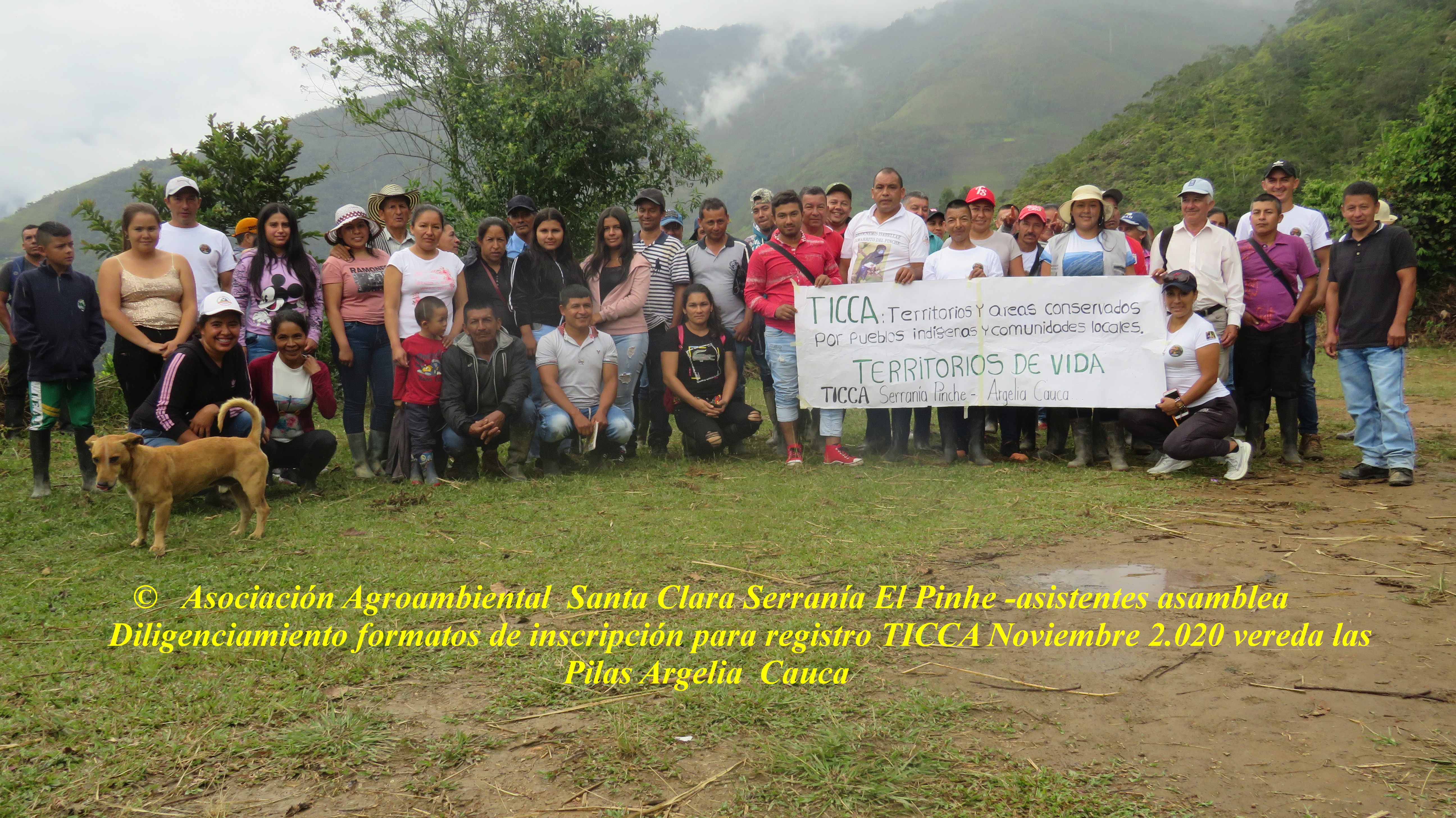
History and activities
The process of community conservation began in the 1980s as an initiative of the peasant communities of two villages of the municipality, Naranjal and Santa Clara. It was an exercise of peasant organization around verbal norms with the aim of conserving forests, water and fish and avoiding deforestation. We did this even without having a full understanding and scientific certainty of the natural wealth in the Serranía. The common phrase that was said frequently at the time was "we have an enormous natural wealth; we must all protect it".
Between 1994 and 2004, we began to put in writing rules to prevent excessive deforestation and colonization and to protect forests and water sources, with the additional commitment to prohibit hunting in all its forms. In 2006, a community-based organization was created, the Santa Clara Serranía El Pinche Agro-environmental Association, which has led conservation, management and environmental education initiatives. Subsequently, and in coordination with the Regional Corporation of Cauca (the state environmental authority in the region) and the Ecohabitats Foundation, we carried out the characterizations and studies to declare the Serranía El Pinche Regional Protective Forest Reserve a protected area in 2008. The protected area is of regional nature with an unprecedented community administration and management mechanism in the country.
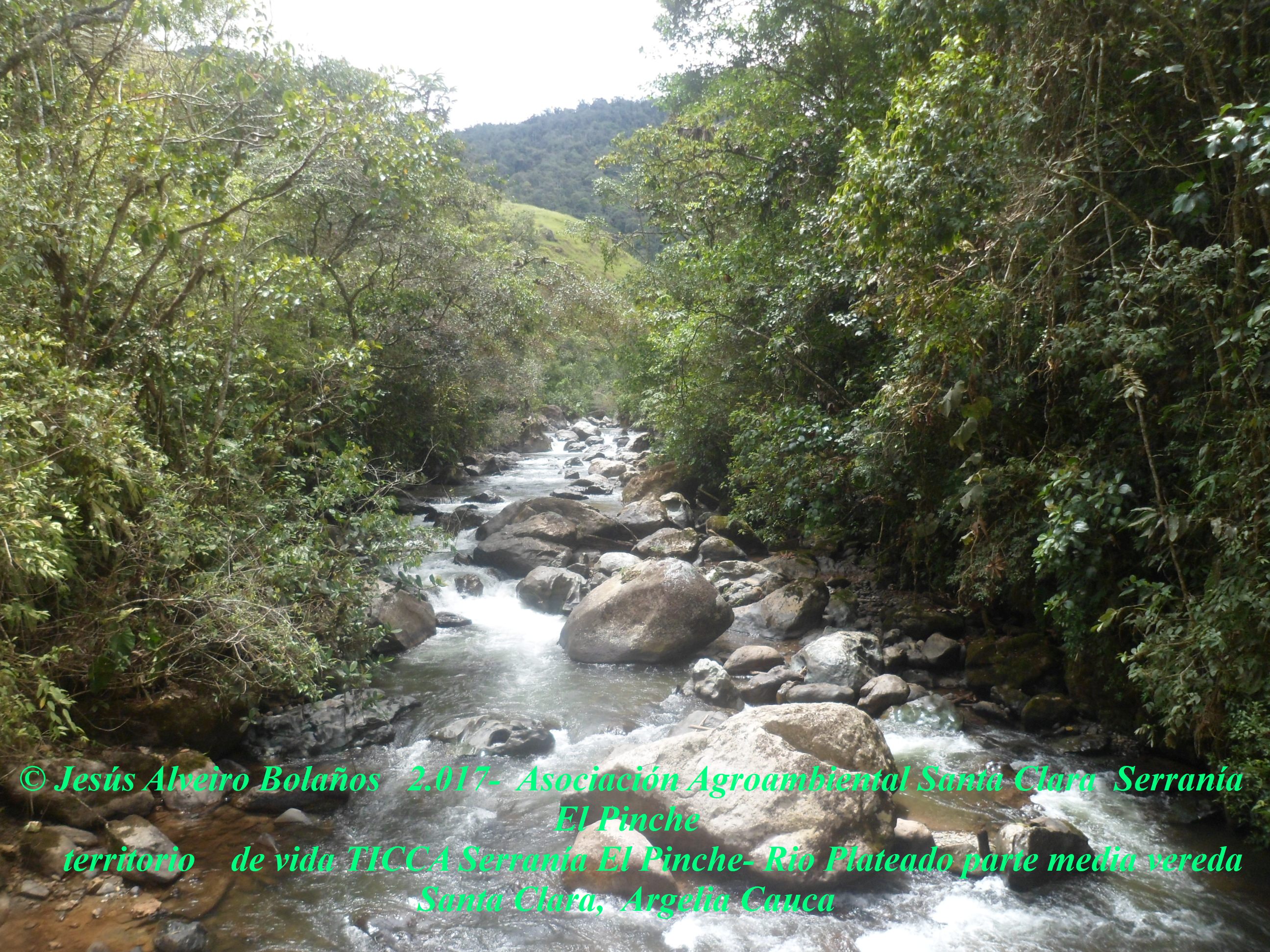
Territory of Life
Between 2017 and 2018, 24 villages joined the Territory of Life process and began participating in environmental education initiatives and writing village environmental plans. As a result, we advanced the planning and zoning of the territory in order to establish limits on the expansion of the agricultural frontier and illicit crops, to protect water sources and define areas of strict protection in the sidewalks (*definition provided at the end). Some families contributed areas within their own properties to enable us to expand the conservation area and create biological corridors.
The Territory of Life ICCA Serranía El Pinche was self-recognized and self-declared by act of self-government by 17 of the 24 villages in October 2020, covering a total of 21,617.48 hectares. This self-declaration includes the community managed Serranía El Pinche Regional Forest Reserve (7,256 hectares). Currently, another 12,139.1 hectares are in the process of being recognised as part of the Regional Reserve, which again will be under community management and governance. The remaining 2,222.38 hectares are not recognized, designated or declared under a category of the state order, but they are strategic areas that provide ecosystem connectivity and are recognised under the customary laws for the consolidation of the Territory of life ICCA Serranía El Pinche.
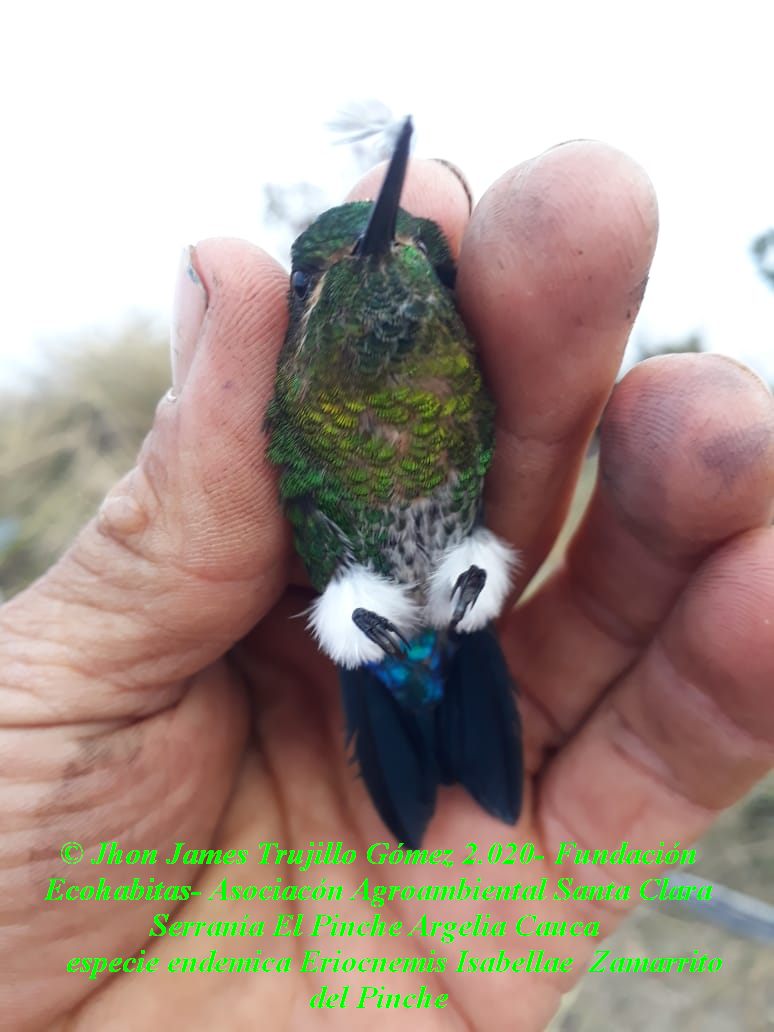
Conservation
Located in southwestern Colombia, on the western flank of the Cordillera Occidental, the territory’s altitudinal range varies between 1,500 and 3,800 metres above sea level and is a transition corridor between the Chocó biogeographic region and the Andean zone. The territory is crossed by a wealth of tributaries and rivers that drain from the western flank of the Cordillera towards the Pacific Ocean and those that drain towards the eastern flank, serving the peasant communities of several municipalities, including Argelia.
The Serrania has a variety of ecosystems in an excellent state of conservation, including sub-Andean and Andean forests, subpáramos and páramos. It has high levels of biodiversity. To date we have a record of 352 species of birds distributed in 232 genera and 51 families. This includes 8 of Colombia’s endemic bird species and 49 almost endemic species. These include the frailejón Espeletia marnixiana and the hummingbird Eriocnemis isabellae or zamarrito del Pinche, which is endemic to the Serranía El Pinche, meaning it is only found here. We have also recorded 457 species of plants belonging to 85 families and 200 genera. 4 plant species have been identified as new to science and 17 plant species are endemic to Colombia. For mammals, we know of the presence of 15 species (guagua, guatín, deer, armadillo, sloth bear, opossum, spectacled bear, zaíno, fox, otter, squirrel, cusumbo), including 3 species of felines (tiger, leopard and tigrillo).
Management and governance
The government of the ICCA is exercised communally through management groups elected by the community action boards of the 17 villages and the Santa Clara Serranía El Pinche Agro-environmental Association. Decision-making on the governance, management and custody of the entire ICCA is carried out through community agreements made by the community governing bodies of the villages.
The ICCA provides us with ecosystem services for the benefit of the families of each community, and the resource we use the most is water for consumption and agricultural work on our farms. While all families are holders of legal and/or de facto rights and have rights to all resources within the territory, we have agreed not to use them within the conservation area and to enjoy the ecosystem services provided by the protected area and the conservation area. In addition, we hope that the ICCA will be used as a space for research, education and nature tourism and bring opportunities for peasant families who have contributed so much to the conservation and therefore to the formation of the ICCA Serranía El Pinche.
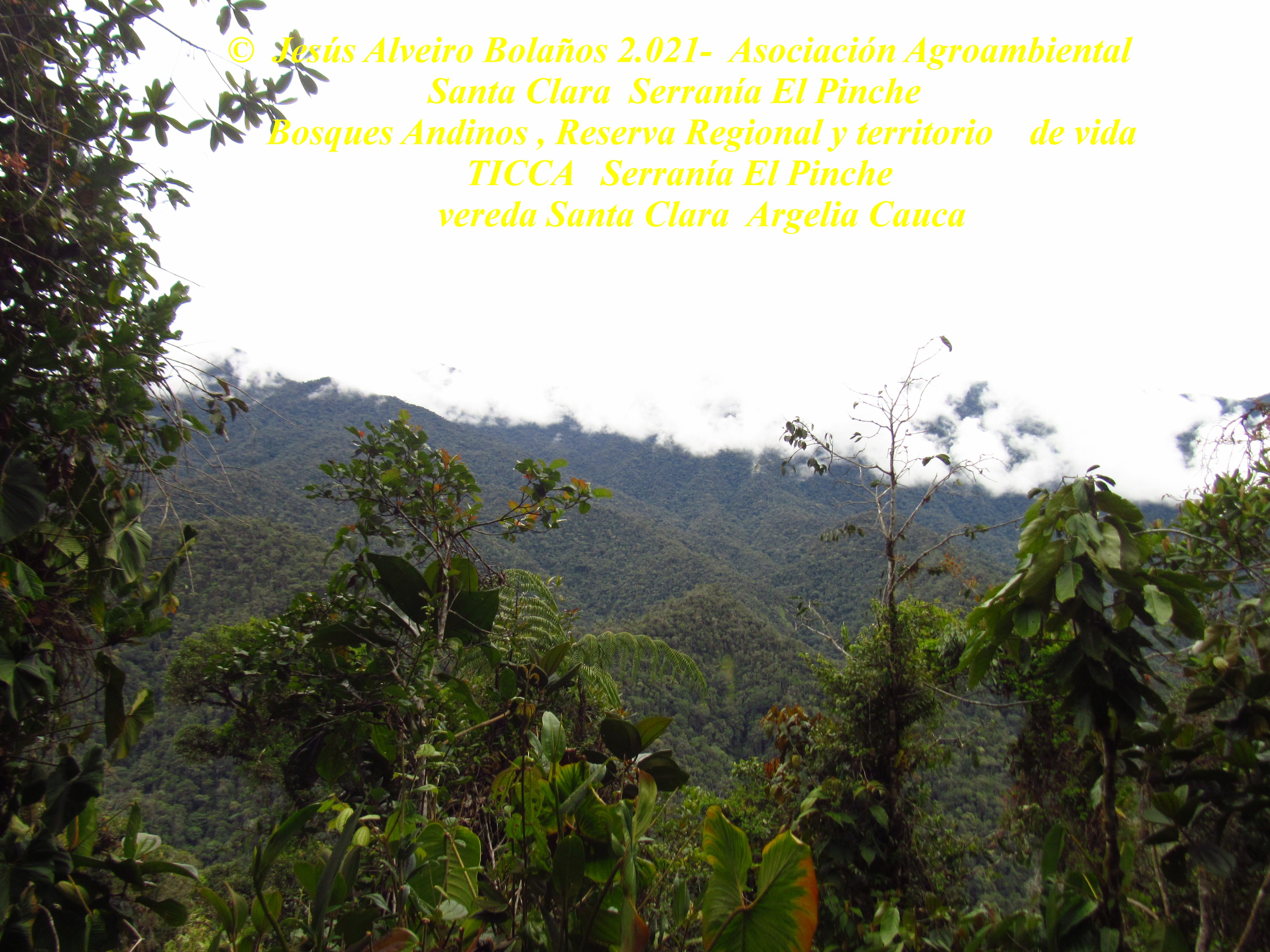
Threats
The main threats facing the territory of life and its custodial communities are the violence that has not ceased despite the signing of the Peace Agreement in Colombia. In addition, there are threats related to the expansion of the agricultural frontier, the colonization of conservation areas, monoculture, extensive livestock and forest fires. However, deforestation and forest fires have been mitigated to the extent that in recent years more communities have become involved in the ICCA reflection process, providing community-designated conservation areas.
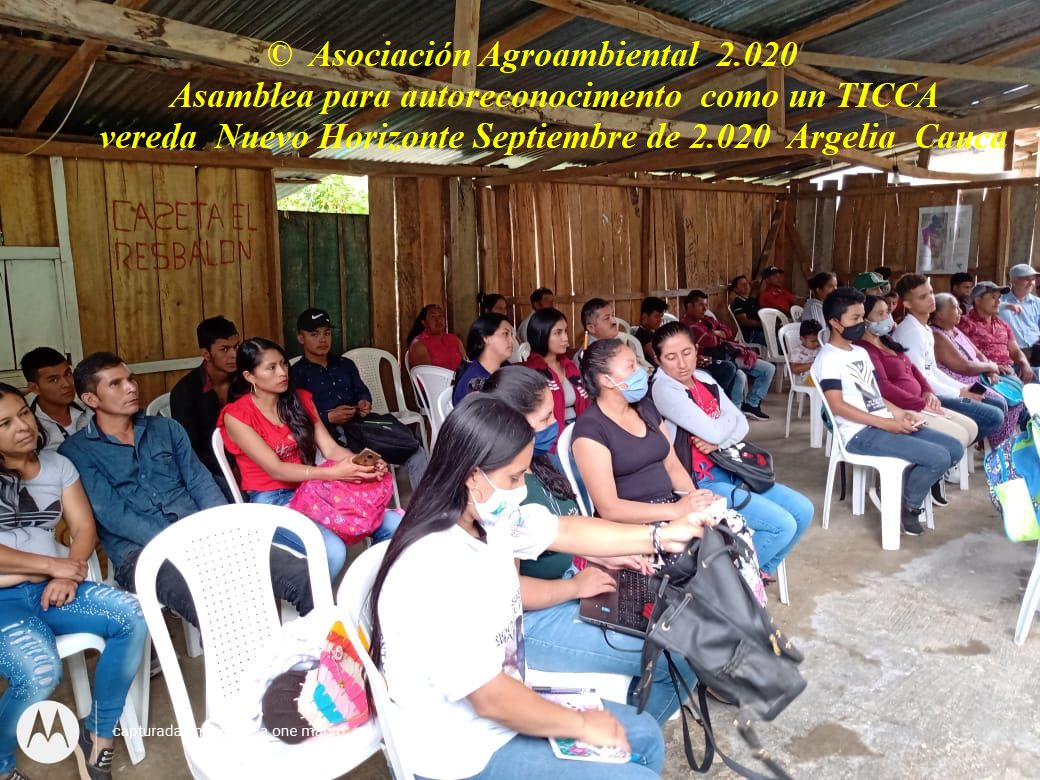
Next steps and support needed
The support we expect with the Declaration and registration of our ICCA, in addition to networking and learning from other Territories of life, includes funding and being able to pay staff for the execution of various conservation, management and monitoring activities. To fulfill the conservation objectives of the ICCA, we would like recognition by, and institutional commitments from, public entities, such as the Municipal Mayor's Office, the Regional Autonomous Corporation of Cauca and the Government of the Department of Cauca. We would like financial support to develop more physical infrastructure in the protected area, especially for control and surveillance activities, as well as the promotion of nature tourism and signage. Finally, we would like support for agricultural production. Investment is needed to support the establishment of crops and enable commercialization of our products in local, national and international markets as conservation incentives
* The Sidewalk is a category of territorial division of the rurality of the municipalities, institutionalized in Colombia, and that is considered as a unit of rural planning, made up of several peasant families and their plots. The sidewalks are governed by the community action boards that, in Colombia, are civic, social and community organizations of social management, non-profit, of a solidarity nature, with legal personality and their own patrimony, voluntarily integrated by the residents of a place that join efforts and resources to seek an integral, sustainable and sustainable development based on the exercise of participatory democracy.
This case study was originally published by UNEP-WCMC in September 2022. The content was provided by the custodians of this ICCA. The ICCA has been self-declared and has been through a peer-review process to verify its status. More details on this process can be found here. The contents of this website do not necessarily reflect the views or policies of UN Environment Programme or WCMC.